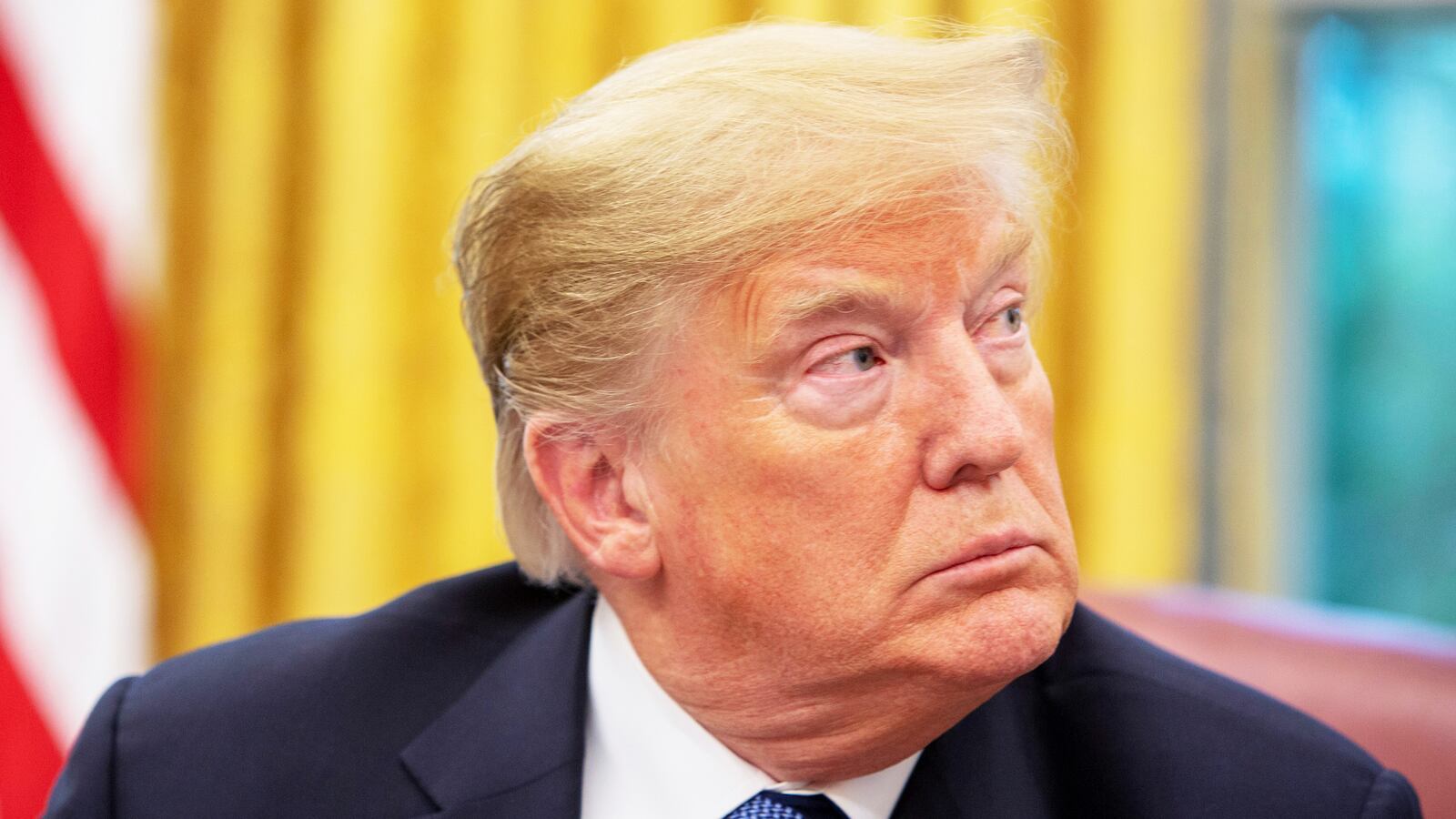In a series of conversations in July, officials from the U.S., Britain, Italy, and other countries devised plans to overhaul the way they sold the public on staying in the 17-year-long war in Afghanistan.
The talks, which took place in Afghanistan during the weeks prior to this summer’s NATO summit, dealt with broad stroke strategy decisions, including publishing more video content about military activities on social media and pushing out information about the growing peace protests taking place across the country, three sources with first-hand knowledge of the meetings told The Daily Beast. Several of the meetings focused on what those involved in the discussions viewed as a major hurdle: convincing President Trump to change course in Afghanistan and allow U.S. troops to stay in the country for the foreseeable future.
And there was only one real way to do that, sources said. They would need to bring in Fox News.
Representatives of the countries drew up a proposal to reach out to Fox to ask correspondents to embed with former Gen. John W. Nicholson Jr., the commander of the American-led coalition in Afghanistan and his forces, the sources said.
“There was a need to change the mood, to turn things around,” one of the people involved in the conversations told The Daily Beast. “There was a real push to keep Trump on board with what we were doing. It was a bit surreal that the conversations were even happening—that they thought that was the way to get the president to listen.”
Officials at the Pentagon and Fox News said the media outlet’s correspondents did not embed with U.S. forces in Afghanistan and it’s unclear if the military made a formal request with its executives. The NATO-led Resolute Support mission declined to comment.
Trump has long called for the end of the war in Afghanistan. In his South Asia strategy proposal, announced in August 2017, he pushed for U.S. troops to consolidate to focus on populated areas of the country and allow Afghan security forces to take over some of the most remote enclaves of fighting. Trump also entertained new strategy options for Afghanistan from former chief political strategist Steve Bannon and Erik Prince, the founder of Blackwater. Bannon largely supported Prince’s vision for privatizing the war, as did Trump’s son-in-law Jared Kushner. A presentation crafted by Prince and first published by BuzzFeed News revealed the former U.S. Navy Seal’s war plans. In the presentation, Prince lays out a strategy for the U.S. to reap the wealth from Afghanistan’s minerals.
Instead, on advice from Defense Secretary Jim Mattis, the president committed to an open-ended deployment of U.S. military advisers, trainers, and special forces. Since then, though, the Taliban has regained groups and the Afghan forces have slid back from their posts, frustrating Trump.
The conversations about Fox came during a time when the U.S. was working to promote peace protests spreading throughout the country, which began after a deadly car bomb explosion outside a packed sports stadium in Helmand in March. Secretary of State Mike Pompeo had visited the country to meet with President Ashraf Ghani, offering assistance ahead of long-desired peace negotiations. The U.S. was also preparing to undertake a review of its strategy in the country.
Members of the media team in Kabul were tasked with developing a plan to maximize buzz around the peace protests—part of an overall strategy to entice the Taliban into negotiating.
“Nicholson absolutely wanted to see the protests continue and foster,” one individual that worked closely with the former general said. “It was our view that it is something that is different and something that had not happened before and it could be used for political recourse.”
Sources who worked closely with Gen. Nicholson said his wife, Norine MacDonald, who was stationed with him in Afghanistan, was heavily involved in social media strategy and often had a direct hand in messaging. MacDonald is a security analyst and has long been active in Afghan affairs.
The sources who spoke with The Daily Beast, some who had just returned from Afghanistan, said that for the first time in years, officials in the military this summer felt there was a reason to stay—that they were advancing on a number of fronts both politically and militarily. The Afghan army training was improving, they said. But that sentiment was not one shared by the larger ranks of the military.
At the same time, the U.S. was dealing with increasing criticism that it had, in fact, not made advances, at least not militarily, in Afghanistan over the last several months. Part of the strategy in Afghanistan at the beginning of the summer was to get the public, and the president, to focus not on military operations, but instead on on the political measures being taken to set up negotiations with The Taliban.
According to one person familiar with the deliberations about media strategy in the country, some U.S. and international officials had previously encouraged Ghani to sit for an interview with Fox News in order to draw Trump's attention to the conflict there. Ghani's interview, which ran in April 2017, focused heavily on areas where the U.S. could gain economically from business partnerships with Afghanistan.
The Taliban’s public position is that they won’t engage the Afghan government in peace talks without a timeline for withdrawing U.S. troops, although in private their position is far more flexible. Ghani, for his part, believes Trump’s strategy in the country is working.
Or at least that’s what he said in an interview with Vice News. “For the first time, the possibility of peace is really at hand,” he said.
—with additional reporting by Max Tani






